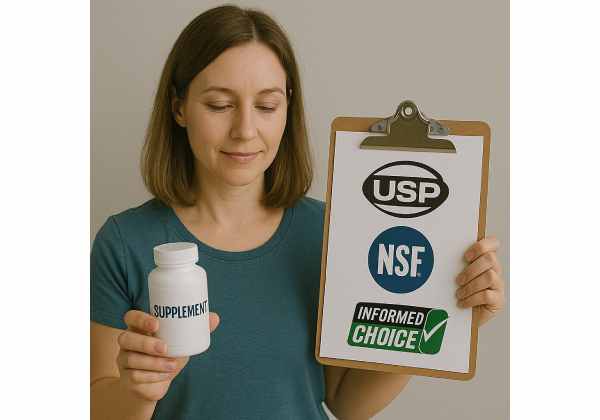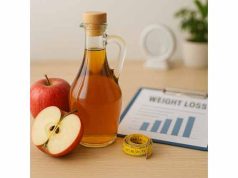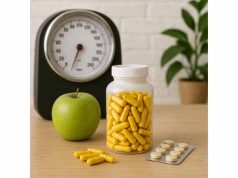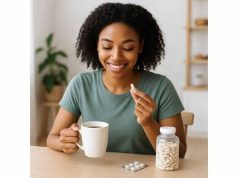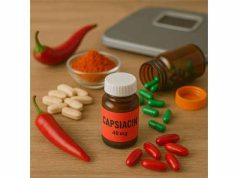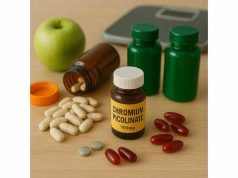Choosing a supplement is harder than it should be. Labels can look impressive while hiding weak dosing, contaminants, or banned stimulants. Third-party testing reduces those risks. Independent labs verify that what is on the label is in the bottle—and that harmful substances are not. This guide explains how third-party testing works, what USP, NSF and Informed Choice/Informed Sport actually certify, how to spot genuine seals, and how to decide which program fits your needs. If you are comparing supplements with prescription tools for weight management, start with our concise overview of evidence-based options for weight control, then use this article to buy smarter, safer products.
Table of Contents
- What is third-party testing for supplements?
- USP verification: what it covers and how to read the seal
- NSF certification and Certified for Sport
- Informed Choice and Informed Sport explained
- How to verify a brand’s testing claim
- Common pitfalls, recalls and limitations
- Buying guide: which seal should you choose?
- Frequently Asked Questions
What is third-party testing for supplements?
Third-party testing is independent verification that a supplement is accurately labeled and manufactured to a defined quality standard. The certifier is not the company selling the product and does not profit from its sales. Good programs combine three elements:
- Identity and potency testing: confirms the ingredient is what it claims to be and present at the labeled dose throughout shelf life.
- Contaminant screening: looks for heavy metals (e.g., lead, arsenic, cadmium, mercury), microbes, pesticides, residual solvents, and adulterants (e.g., undeclared stimulants or drugs).
- Manufacturing audits: verify that the facility follows Good Manufacturing Practices (GMP), with documented procedures, training, sanitation, and lot traceability.
Why it matters: supplements are regulated differently from prescription drugs. There is no pre-market approval, and quality varies widely between brands and batches. Independent seals reduce—but never eliminate—risk. They are most valuable when:
- You use products daily (e.g., protein powder, vitamin D, creatine).
- You are an athlete subject to anti-doping rules.
- You are pregnant, breastfeeding, or have medical conditions making contamination risk less tolerable.
- You take botanicals or weight-loss products, which historically face more adulteration.
What third-party testing does not guarantee:
- Effectiveness. A seal says the product contains what it claims at the stated dose; it does not prove the dose is right for your goal.
- Safety in your specific case. Interactions with medicines or conditions still apply.
- Purity forever. Certification reflects ongoing programs, but no system can make risk zero; you still need to buy and store wisely.
Where to start if your primary goal is body-weight change: lock down nutrition basics (adequate protein, fiber, fewer liquid calories, consistent activity) and use testing to choose safer versions of the few supplements that actually help you do those basics. If you need a refresher on fundamentals, see our short guide to safe weight-loss fundamentals.
USP verification: what it covers and how to read the seal
USP (United States Pharmacopeia) is a nonprofit that sets public standards for medicines and supplements. The USP Verified mark appears on finished products (not just ingredients) that pass a multi-step program:
What USP checks
- Label accuracy: the active ingredient(s) match label claims, typically across multiple lots; potency is verified through shelf life, not just at manufacture.
- Quality and purity: limits for heavy metals, microbial contamination, and (where relevant) pesticides and residual solvents; for fish oils, oxidation measures like peroxide/anisidine may be included.
- Performance: where appropriate, disintegration/dissolution testing ensures tablets or capsules break down properly for absorption.
- GMP audit: USP audits the manufacturing facility and quality systems on a recurring basis.
- Ongoing surveillance: USP conducts marketplace checks; products can lose the mark if they fail.
How to read the USP mark
- Look for the gold “USP Verified” seal on the label. The fine print should specify the product name and sometimes the category (e.g., “dietary supplement”).
- The verification applies to that exact product (brand, strength, dosage form). A brand may have some verified items and others that are not.
- You can confirm listings on USP’s public database; if a product claims verification but is not listed, treat it as a red flag.
Who benefits most from USP
- People who want broad quality assurance (identity, potency, contaminants, and manufacturing) for daily staples like multivitamins, minerals, vitamin D, omega-3s, or fiber supplements.
- Users who do not need anti-doping certification but still want strong quality oversight.
Limitations to know
- USP verification focuses on what is in the bottle, not banned-substance screening for sport.
- It does not certify clinical efficacy or the science behind the formula.
If you are learning to decode labels alongside seals, our quick guide on how to read supplement labels shows you where to find serving sizes, forms, and red flags.
NSF certification and Certified for Sport
NSF (formerly the National Sanitation Foundation) runs several programs. You will most often see NSF Contents Certified and NSF Certified for Sport.
NSF Contents Certified (general consumers)
- Verifies label claims and contaminant limits (heavy metals, microbes).
- Includes GMP registration of the manufacturing facility with periodic audits.
- Suits everyday vitamins, minerals, and common sports nutrition products when anti-doping is not a concern.
NSF Certified for Sport (athletes)
- Everything in Contents Certified plus screening for hundreds of banned substances from major sport bodies.
- Products are tested before certification and regularly after (including marketplace surveillance).
- Designed to reduce the risk of inadvertent doping from contaminated pre-workouts, fat burners, or muscle-building aids.
Reading the NSF mark
- The NSF circle indicates general certification; a “Certified for Sport” badge or wording signals the athlete-grade program.
- Confirm the exact product (flavor, size) on NSF’s online listings; each SKU is certified separately.
Who benefits most from NSF
- Competitive athletes (including high-school, collegiate, and professional) and military or first-responder personnel subject to drug testing.
- Anyone using sports nutrition categories at higher risk for adulteration (pre-workouts, weight-loss aids, testosterone boosters).
Limitations
- Certified for Sport focuses on banned-substance risk; it does not prove a product’s effectiveness or guarantee it is right for your goal.
- Costs can be higher; not all reputable brands pursue the athlete program.
If you rely on supplements to maintain training quality during a calorie deficit, see our primer on creatine during fat loss for an example of a low-risk, well-studied option that is often NSF-certified.
Informed Choice and Informed Sport explained
Informed Choice and Informed Sport are global certification programs run by LGC (a well-known anti-doping laboratory). They focus on banned-substance testing and supply-chain quality, with a particularly strong footprint in the UK, EU, and international sport.
How they work
- Facility assessment: manufacturer quality systems and GMP compliance are reviewed.
- Pre-certification testing: products must pass screening for a wide panel of prohibited substances.
- Ongoing surveillance: monthly marketplace sampling and testing help catch issues between audits.
- Two levels:
- Informed Choice: for general fitness consumers who want lower risk of contamination.
- Informed Sport: a higher-frequency testing program intended for drug-tested athletes.
Reading the mark
- Look for the Informed Choice (checkmark icon) or Informed Sport logo. Scanable QR codes on some labels link directly to the product’s certificate page (helpful for verifying flavors and lots).
Who benefits most
- Athletes, especially in organizations recognizing Informed Sport listings.
- International consumers who want an alternative to NSF Certified for Sport with similar intent.
Limitations
- Like NSF’s athlete program, Informed Choice/Sport do not certify effectiveness; they reduce contamination risk.
- Not all categories (e.g., botanicals with complex chemistry) are equally covered; check the product certificate for panel details.
If you use pre-workouts or “metabolism” formulas, understand stimulant risk and timing. Our guide to caffeine and stimulant safety explains effective doses and how to avoid sleep-disrupting excess.
How to verify a brand’s testing claim
Seals can be misused. Here is a practical audit you can do in two minutes before buying.
1) Check the official database
- USP: search the product name and brand; confirm the dosage form and strength match your bottle.
- NSF: use the product search; verify the exact flavor/SKU for Certified for Sport.
- Informed Choice/Sport: scan the label’s QR code or search the product list; ensure your flavor and batch appear.
2) Confirm the scope
- Does the certificate cover finished products, ingredients, or just the facility? (Finished product certification is strongest.)
- For sports marks, is the product Certified for Sport/Informed Sport (athlete grade) or only a general certification?
3) Read the fine print on the label
- Look for the full company name, lot number, expiration date, and serving size.
- Check for the supplement facts panel with form (e.g., magnesium citrate vs oxide) and amount per serving.
4) Evaluate transparency
- Reputable brands provide COAs (certificates of analysis) on request or via QR codes.
- They disclose sweeteners, allergens, and flavor systems clearly.
5) Beware common red flags
- Seals that are blurry or cropped, or seals placed on product images online but missing on the actual package.
- Claims like “pharma-grade,” “FDA approved,” or “clinically proven” without specifics.
- Proprietary blends that hide individual doses of key actives.
For broader context on risky categories, skim our review of fat-burner risks—these products are frequent offenders for undeclared stimulants and spiked drugs.
Common pitfalls, recalls and limitations
Pitfall 1: Assuming any seal equals effectiveness
A seal verifies quality, not outcomes. You still need evidence that the dose and form are appropriate for your goal (e.g., elemental magnesium amount; creatine monohydrate vs blends).
Pitfall 2: Not matching the exact SKU
Certification is SKU-specific. A chocolate flavor may be certified while a seasonal flavor is not. Always verify the flavor and size.
Pitfall 3: Overlooking storage and shelf life
Potency at expiration depends on storage. Heat and humidity degrade probiotics and some botanicals. If a product requires refrigeration or desiccants, follow those instructions or choose a shelf-stable alternative.
Pitfall 4: Confusing “GMP facility” with product certification
Many labels tout “manufactured in a GMP facility.” That is baseline compliance; it is not independent, product-level verification.
Pitfall 5: Ignoring interactions and personal risks
A clean product can still be wrong for you (e.g., stimulant sensitivity, anticoagulant therapy, pregnancy). Quality marks do not replace medical advice.
About recalls
- Recalls happen for undeclared ingredients, contamination, mislabeling, or adverse event reports.
- Athlete-grade programs (NSF Certified for Sport, Informed Sport) conduct market surveillance that can catch issues early.
- If your product is recalled, stop using it, check the lot number, and contact the brand for a refund and guidance.
Limitations of third-party programs
- They balance cost and coverage; no program can test for every possible contaminant in every batch.
- Botanicals vary by harvest and region; even with testing, natural variability affects potency.
- Some high-quality brands choose not to certify due to cost, confidentiality, or supply-chain complexity; you must then rely on COAs, GMP registration, and brand transparency.
The smart approach is layered: choose evidence-based supplements, favor certified SKUs, and keep your diet doing most of the work.
Buying guide: which seal should you choose?
Use this decision map to match seals to your goals, risks, and budget.
If you are a tested athlete (or could be):
- Prioritize NSF Certified for Sport or Informed Sport.
- Stick to certified SKUs for pre-workouts, fat-loss aids, protein powders, EAAs/BCAAs, and creatine.
- Keep records (photos of labels and lot numbers) in case of questions.
If you are not drug-tested but want robust quality:
- Choose products with USP Verified or NSF Contents Certified marks—especially for daily staples: multivitamins, vitamin D, minerals, omega-3s, fiber, probiotics.
- For botanicals, prioritize brands that publish lot-specific COAs with identity testing (e.g., HPLC, DNA barcoding where appropriate).
If you are pregnant, breastfeeding, or have higher vulnerability:
- Use USP Verified or NSF for prenatal vitamins, minerals, and fish oils; verify potency through expiration and contaminant limits.
- Avoid weight-loss or stimulant products entirely unless advised by your clinician.
If cost is the main barrier:
- Limit supplementation to high-yield basics that support your diet (e.g., vitamin D if deficient, creatine if you lift, protein powder if meals fall short).
- A few certified SKUs used consistently beat a shopping cart full of uncertified “deals.”
How many seals should a product have?
- One reputable program is enough when it matches your risk profile.
- More seals can increase confidence but may raise price without adding meaningful protection for your situation.
Before you click “buy”
- Confirm the exact SKU in the certifier’s database.
- Read the Supplement Facts for forms and doses.
- Look for COAs or QR links.
- Check allergen and sweetener lists.
- Consider your goal: does this product and dose make sense?
Bottom line: Pick the seal that solves your biggest risk, then return to the basics—meal quality, protein, fiber, sleep, and training—to do the heavy lifting.
Frequently Asked Questions
Is third-party testing required for supplements?
No. In most countries, supplement makers can sell products without independent certification. Third-party programs are voluntary. Choosing a verified product reduces risks of mislabeling and contamination but does not guarantee effectiveness for your specific goal.
What is the difference between USP and NSF?
USP Verified emphasizes pharmaceutical-style standards for identity, potency through shelf life, contaminants, and tablet performance, plus facility audits. NSF offers contents certification and an athlete-grade Certified for Sport program that adds extensive banned-substance testing and marketplace surveillance.
Who should choose Informed Sport over Informed Choice?
Select Informed Sport if you are drug-tested or compete at levels where anti-doping rules apply. Informed Choice suits general consumers who want reduced contamination risk but do not require athlete-grade frequency of testing and surveillance.
Do these seals prove a supplement works?
No. Seals verify what is in the product and that it is made under audited conditions. They do not prove clinical effectiveness. Use evidence-based doses and forms, and keep food-first strategies central to your plan for weight, health, or performance.
Can a brand certify only some flavors or sizes?
Yes. Certification is SKU-specific. One flavor can be certified while another is not. Always confirm the exact product name, flavor, and size in the certifier’s database or through the QR code on the package.
Are certified products always more expensive?
Often, but not always. Fees and testing add costs, yet many certified staples are priced competitively. Paying slightly more for verified quality can be worthwhile for daily-use products or higher-risk categories like sports nutrition and botanicals.
What should I do if a certified product is recalled?
Stop using it, record the lot number, and follow the recall instructions. Contact the brand for a refund and replacement guidance. Recalls happen even with good programs; certification adds layers of prevention and surveillance but cannot make risk zero.
References
- Questions and Answers on Dietary Supplements 2024
- Certified for Sport® Program 2025
- Informed Sport Supplement Certification Process 2025
- Dietary Supplements: What You Need to Know 2023
- From ‘traditional’ remedies to ‘modern’ supplements: a systematic review and meta-analysis of pharmaceutical adulteration in weight-loss natural products 2025 (Systematic Review)
Disclaimer
This guide is for general education and is not a substitute for personalized medical or legal advice. Always consult a qualified professional before starting supplements, especially if you are pregnant, breastfeeding, have chronic conditions, take prescription medications, or are subject to anti-doping rules.
If this article helped you choose safer products, please share it with a friend or teammate who buys supplements. For future updates and practical buying checklists, follow us on the social network you already use—Facebook, X, Instagram, or LinkedIn.


